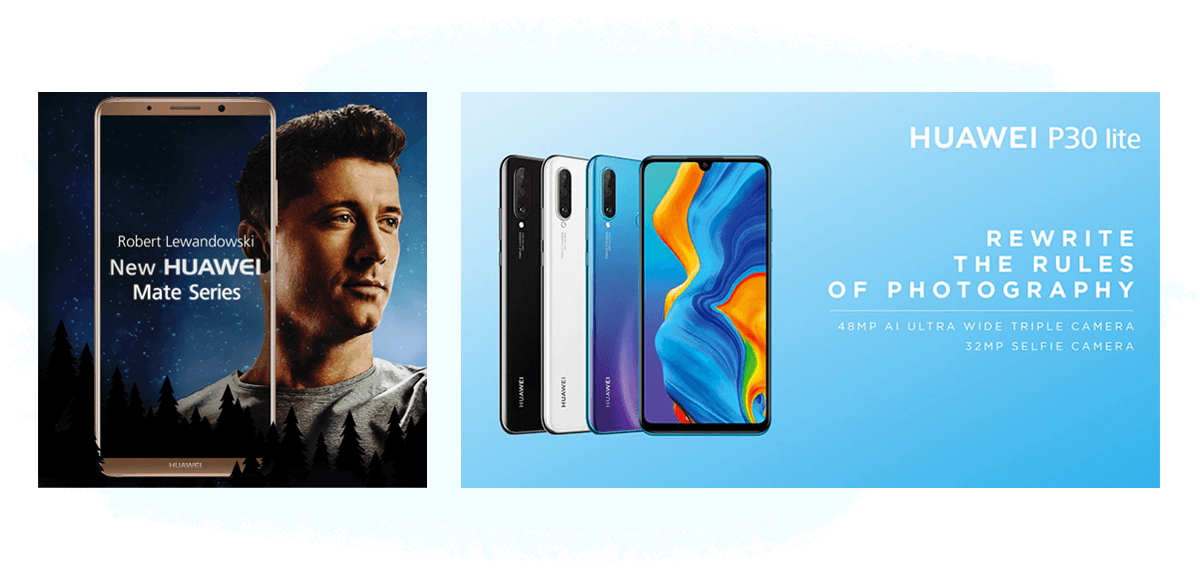Influencer marketing has become a popular new medium for brands over the past few years. But just like with all new marketing mediums, influencer marketing is experiencing growing pains.
In the infographic below, we look at the growth of influencer marketing, the benefits it offers advertisers, and the challenges and opportunities facing influencer marketing technology vendors.
The State of Influencer Marketing in 2023

The Popularity of Influencer Marketing
While the thought of brands paying social media users thousands of dollars to promote their products and services seems a bit extravagant to some, there are a number of reasons why this area of digital marketing is growing the way it is and why it is expected to reach $22.2 billion dollars by 2025.
Research from gen.video and Geometry Global’s The Influence of Influencers report shows that social media users are more likely to choose travel destinations or purchase electronics, clothing, food and beverage, and health and beauty products after seeing them promoted by influencers.
Here are some other statistics that highlight the popularity of influencer marketing:
- Social media influencers are not only seen as trusted sources by 90% of social media users, but are also an effective way of driving sales for businesses.
- Influencer marketing is perceived as an effective form of brand communication, with more than 70% of brands using influencers as a part of their marketing strategy.
- According to 86% of marketers, the most important objective of influencer marketing campaigns is building brand awareness.
- Influencer marketing is used for many other objectives, including reaching new or targeted audiences (74%), improving brand advocacy (69%), and increasing sales (46%).
The Benefits of Influencer Marketing for Brands
Engaged and Loyal Audiences
Although traditional and digital advertising channels are still effective in reaching a brand’s audience, it’s hard to achieve both reach and engagement at the same time.
Influencer marketing helps solve this problem for brands by allowing them to reach their target audience and show their product or service while their audience is engaged.
This medium allows brands to get creative with their campaigns and increase engagement, such as by holding competitions. Being creative and trying out what works and what doesn’t is just a part of every Influencer outreach campaign.
Influencer Marketing Is a Natural Way to Reach a Target Audience
Influencer marketing also establishes a better connection between the brand and consumer as it’s carried out by an influencer (human) via personal recommendations, as opposed to a brand (corporation) communicating directly to consumers via advertisements.
Compare the examples below:

In other words, the idea is to reach key audiences via individuals who are well-known, valued and whose opinion matters to the audience.
Because most influencers know their audience, they can help advertisers create campaigns that will deliver the best results possible.
With the right tools and technology, influencers can partner with brands to create appealing, creative, and high-quality content in the form of images, audio podcasts, or videos.
Influence Marketing Builds Credibility and Trust
Because influencers are seen as experts in a given area, their followers trust their opinions, recommendations, and product or service choice. They can better influence their followers’ decisions compared to brands that are simply trying to build brand awareness.
Influencers work on a daily basis to build an inspiring and respectful relationship with their fans, therefore people rely on their recommendations and consider them valuable.
The numbers speak for themselves — 80% of consumers complete a purchase after seeing an influencer recommend that product on social media.
In addition, more than half of the consumers declare that word of mouth and social media communications are their preferred ways of learning about new brands and their offerings.
Influence Marketing Boosts Content Strategies
Coming up with ideas for fresh and entertaining content is a constant challenge for every brand. Luckily, influencer marketing can help to fill those gaps and execute a great content strategy.
Influencers are familiar with methods of producing engaging and good-quality content that puts the brand’s products or services in a different light and positively impacts a brand’s image.
Using influencer marketing is one of the best marketing strategies to test out in 2023, as more than 90% of consumers engage with influencers on a weekly basis on Instagram, YouTube, TikTok, and Snapchat.
People are hoping for unique and inspirational content that only influencers with their unique approach may provide.
Influencer Marketing Enhances SEO & ROI
Influencer marketing is considered to benefit a brand in regard to its SERP results and SEO. The analysis from QuickSprout proves that social media interactions can directly or indirectly enhance a brand’s SEO performance.
Influencer marketing helps brands to have an active profile on social media, which means a constant increase in new followers, multiple mentions, and recommendations of products or services, resulting in building brand awareness.
Once the follower sees a specific product or service that a brand offers, they are more likely to visit the brand’s website, which leads to a boost in web traffic.
For brands of all sizes cooperating with influencers means attracting more customers and scaling up by building brand awareness and more visibility. Those two benefits undoubtedly spark more purchase decisions and result in a higher ROI than other marketing channels.
Influence Marketing Impacts Purchasing Decisions
Influencers often have a positive impact on customers’ purchase-making process. They present a brand’s goods and services in a way that leads to a positive reception of a brand.
Influencers are also respected and trusted, and numerous studies have shown that they can affect their followers’ decisions at each level of the marketing funnel. The Digital Marketing Institute declares that 49% of respondents said they decided to make a purchase because of an influencer’s referral.
For teenagers, the number reaches 70%. The survey shows that 40% of people purchase a product or service after seeing it on YouTube, Facebook, or Instagram.
Statistics from Think with Google also confirm that six out of ten users will decide to make a purchase based on their favored content creator’s recommendations.
The Main Technological Threats For Influencer Marketing Platforms
Influencer Fraud
Influencer fraud generally refers to fake influencers and fake followers.
Fake influencers are social media users who give the impression that they are real influencers by using stock photos and huge numbers of fake followers. Even though they post high-quality images that are not much different from those of a real influencer, the main difference is that they are followed by fake accounts or bots.
Fake influencers are followed by both fake and normal influencers to boost the size of their audience. The number of followers is very often the main requirement for brands to work with influencers, therefore some of them artificially inflate the numbers to secure more lucrative deals.
As with fraud in the display advertising industry, influencer fraud causes distrust among brands and leads to them spending less on influencer marketing campaigns. This impacts all players in the industry.
Influencer fraud is a common issue, with 68% of marketers citing fake followers as their main challenge according to the The State of Influencer Marketing 2020: Benchmark Report, up from 63% in 2019.
Research by Analysis from Points North Group found that one large cosmetics brand spent $600,000 on impressions that were not seen or seen by fake followers.
In another report, an anti-fraud company called Sway Ops found that a single post tagged as #sponsored or #ad on Instagram contained over 50 percent fake engagements. Out of 118,007 comments, only 20,942 were made by non-bot followers.
Here are a few more statistics about influencer fraud:
- Fake influencer follower fraud cost companies $81 billion in 2022
- The total cost of digital ad fraud worldwide is believed to reach 100 billion by 2023.
- Up to 20% of mid-level influencers between 50,000 and 100,000 followers are likely to be fraudulent.
Measuring ROI
There has been no simple or consistent method to measure the real impact of a particular influencer. Therefore, neither marketers nor brands know what the real value of an influencer is and how much campaigns should cost.
The main challenge here is measuring a campaign’s overall performance and tracking the actual influence an individual influencer had, from the first point of engagement all the way through to the conversion.
The Influencer Intelligence’s latest report, Influencer Marketing 2020, reveals 84% of marketers feel proving the ROI of influencer marketing is a challenge.
The main issues concern:
- Brand awareness campaigns are always hard to measure.
- Technical limitations can negatively impact campaign measurement, as there is no way to add clickable links to instagram posts which means no click-through attribution.
- If the influencer does include some sort of link or short URL, the user would have to manually copy and paste it to the browser, with no referrer information being passed which brand’s analytics software will count as direct visit instead of from an influencer.
- Campaign data is also impacted on other social media platforms as referrer information is lost when people click on links inside mobile apps that direct them to web pages in browsers.
- Users will simply search for the brand on Google after being exposed to an ad, which will again result in the wrong channel being given credit for the visit and conversion.
To solve this problem, influencer marketing vendors can build measurement solutions akin to those used in TV and radio, such as time-based attribution models.
Campaign Automation
The daily routine of an influencer usually involves a variety of activities, starting from social listening and content analysis to looking for appropriate industry experts and outreaching them.
After sending hundreds of emails and looking through several influencers’ profiles, curating the content and evaluating the campaign performance, you would probably agree that some of the tasks are quite tedious.
According to 72% of marketers setting up an influencer marketing campaign is a manual and time consuming process that can be automated. As well, 67% marketers say that finding the right influencers is an issue when it comes to working with influencers.
Some of the main ones include:
- Finding the right (and genuine) influencers.
- Communicating with influencers.
- Managing contracts.
- Handling payments.
Influencer marketing vendors are in a good position to solve many of these changes by building new features that automate and turn campaigns into a seamless flow.
Seizing Opportunity
The problems that influencer marketing faces, such as lack of control over the campaign performance and technological challenges listed above, can be resolved via technological innovation. After all, influencer marketing vendors are tech companies.
The opportunity for vendors is using technological innovation as a point of differentiation.
Although the advertising technology (AdTech) and marketing technology (MarTech) industries have seen a stream of new vendors join on the scene, most lack a clear point of differentiation.
The ones that stand out from the crowd and attract new clients are best at differentiating themselves from the competition. By building innovative tech and features that solve the main challenges for brands and influencers, vendors are in a good position to take more market share.
The influencer marketing industry is no different than any other emerging industry; the successful vendors will be the ones that spot the opportunities and capitalize on them.
The post The State of Influencer Marketing in 2023 [infographic] appeared first on Clearcode.
The original post is at MarTech Archives – Clearcode




Leave a Reply